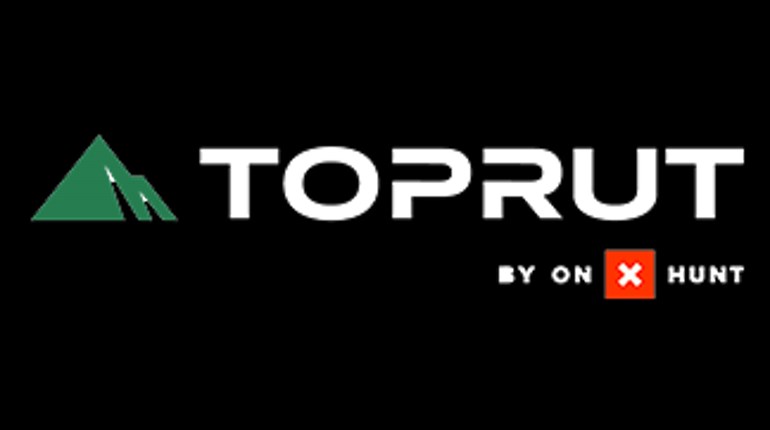
We Carry Lifers have an image problem, like it or not. Non-shooters especially, but some surprising others too, labor under lingering doubts that we’re secretly fonts of seething, irrational fury, waiting to erupt with gunfire at imaginary provocations.
The happy—though certainly unappreciated—truth is the polar opposite. CCW holders have a lot to lose by overstepping their bounds, and continue to comport themselves with remarkable restraint if you look at the actual record. Only cherry-picking of tiny datasets leads to any other conclusion, and 30-plus years of “Wild West” doom-saying would now be laughed out of serious public discourse if sourcing were anything but what it is—the self-serving and rabidly anti-Second Amendment mainstream media consorting with it’s-better-than-a-real-job wonks at places like Everytown For Gun Safety, Moms Demand Action and the Brady Center to Prevent Gun Violence (formerly Handgun Control Inc.).
It’s our belief that carry practitioners have their superb track record for one reason: Because it’s a part of everyday life, they make it a priority. We suggest that priority itself has components of, well, priority, and that a hard look at those is time well spent. Clearing a cover garment remains a huge barrier to speed.
The legality and justification for any defensive or protective shot is number one—duh—with both reason and mercy implying that pulling the trigger needs to be a last resort. But therein lies the problem: That “last resort” can become injurious or lethal in the twinkling of an eye. One ugly account after the next shows aggressors deliberately complicate decision-making through lightning speed. Time to weigh options is measured in smallish portions of seconds.
This renders number two in our priorities a (near) no-brainer as well: Practice, practice, practice; train, train, train—but not just on the actual shot. If you deconstruct the process from awareness of danger through presentation to engagement, it doesn’t take long to see that speed prior to any trigger press can make a shot unnecessary. As we’ve noted before, there is precedent and even data that supports this proposition (here, among many others).
Simply, if the crucial “draw” predecessor to a shot is good enough, you can make an aggressor react to you, rather than the other way around. For a host of reasons that we trust need no clarification, making such an antagonist think “Oh-oh, wrong pigeon” is about the best outcome you can bring about—no victims, no injuries, no lawyers. (This is also why “Stand Your Ground” laws are an important equalizer; their absence creates an implied duty for the assaulted person to infinitely withdraw, which in turn makes substantive self-defense much more difficult.)
To speed your draw or presentation up, we encourage taking it apart and working on components. We also recommend a non-firing stand-in for this practice for a very practical reason: If you are truly pressing the envelope, you will drop your firearm. Most are mighty tough these days, but why risk damage? Another obvious plus: There is no way your non-firing simulator can get you in negligent discharge trouble. In any event, observe the golden rule of dry practice—no ammunition in the same room where your drills take place. For the present, we’re only talking about on-body carry—strong side, and inside or outside the waistband.
Clearing a cover garment remains a huge barrier to speed. Clearing methods fall onto one of two camps for belt-based carry. Grasping the cover garment and pulling it completely clear of the holster position is likely the surest method. Most instructors seem to prefer to see the strong hand come to the right edge of the front closure (for right-handers, reverse for lefties), and then draw the “flap” out, then back and slightly up, ending the motion to the rear of and slightly below the armpit. Done properly and at speed, this appears to have the strong hand throwing the coat/jacket/shirt back. If you feel the zipper pull, or a button slap your opposite shoulder blade, good.
The desired end position has the drawing hand now roughly above the grip. Used with appendix carry, you’ll be behind the gun, roughly even with a hip position holster, and somewhat forward of kidney carry position.
The alternative is a sweep. Here, the palm of master/strong hand is brought to the abdomen, finger tips pointing down and roughly at belly-button level. The wrist then angles slightly to the rear as the “bladed” hand, pinky first, slides under the garment. Continued rearward motion—importantly, with the hand still in contact with the torso—forces the cover to slide up the wrist and open, clearing the way to the draw.
Ending hand position will generally be just above the grip of your firearm.
Each technique has subtle advantages and disadvantages, but the most important thing is to choose one or the other. “Hybridizing,” at least in our experience, gives poor results. Mainly we think this is due to diagonal motions that are more inclined to foul, but it’s tricky to say with certainly—wide variations in weight and weave of cover garments are where the trouble begins, and where it ends is tougher still to say. Each technique has subtle advantages and disadvantages, but the most important thing is to choose one or the other.
The grasp style works best with garments of middling and heavier weight. There is simply more to effectively “throw” in the effort to unmask your pistol or revolver. It’s weak, however, in the wind and with light cover. Without the “tenting” effect of the wrist/forearm to keep the cover away until the grip is achieved, a restart looms; this is often slower and more fouling-prone than the original attempt. This is particularly so if furling has occurred. Either wind or static can wrap the cover article back around the strong-side wrist or forearm when released for the movement to the grip. The resulting entanglement can have surprising force and disastrous consequence, up to and including a dropped firearm. To some extent, the likelihood of this is reduced by an initial grab lower down on the garment, though it means a longer reach, generally, to establish the grip.
In any event, be authoritative: There is no good way to be subtle with the grab, and staging of the draw puts the necessary movements out of order. Settle for being fast.
A sweep is better for lighter garments because tenting moves the garment and holds it away until grip is established. Furling is still possible, though less likely. The sweep is also a shorter motion, and quicker to the grip. The nuisance with heavier garments is the propensity of the cuff to catch the opening seam as the bladed hand moves backward. Again, being definite in the movement seems to help, as this “feels” more like a problem, rather than actually being one.
The weak hand—with either method—is supposed to move to a timing/hold position at center abdomen (roughly over the navel). This is to keep it from getting ahead of the strong hand and winding up in front of your muzzle prior to the join of the hands. A good plan, but we’re experimenting of late with another role—grabbing the bottom or seam of the cover garment on the weak side. There is no question that this complicates presentation slightly, but it does seem to reduce the propensity for all the strong-side entanglements.
Most of us internalize techniques better with successive approximation and the slow addition of speed. This means practicing just the grab, or moving the hand to the start of the sweep position. Do this in multiple garments, as you may decide some are vastly better (or worse) than others, and this will drive both what you wear presently, and what you buy in the future.
Next, add the clearing movement itself. This properly ends with a movement to, and the establishing of, purchase on the pistol. Remember, any vagaries in grip should be fixed in the holster. Get the grip you want now, not when you’ve started, or worse yet drawn, your pistol. Anything else practically invites a dropped firearm or a poor grip and correspondingly inaccurate first shot. Really unlucky? That weak grip will cause a malfunction, too.
Now draw. This should be only trivially different than a non-cover draw: The elbow comes decisively up first, and then down as the pistol and barrel rotate to parallel with the ground. This is to ingrain clearing the holster, as any attempt to rotate too soon may foul the barrel on your holster (dropped gun, again). It also gives high-strength retention position from which to make a pointed (rather than aimed) shot if your aggressor(s) have closed more rapidly than expected. Elevate and advance the firearm, and join the hands.It’s a “not today” declaration that can spare many pains and sorrows.
Remember the end of every garment clearing may not be a draw, nor the end of every draw, a shot. In fact, our premise is that we profoundly hope there won’t be. When you transition to live fire, slow waaaaay down to start–this is a classic case where “slow is smooth, and smooth is fast.” Let speed come as a by-product of many repetitions. A training partner is a huge help in cementing the shoot/no-shoot part of the lesson: He or she can cue whether a shot is called for in a given iteration. Especially if you shoot with a programmable target system (usually meaning indoors), turning targets are useful, as are armed and unarmed target images. If you can, add “getting off the ‘X’” to your scenarios too.
Getting good at garment clearing isn’t the stuff of an evening or two of practice, and why instructors remotely worth their salt place so much emphasis on another precursor to the shot: situational awareness. Mistakes may have been made already if you’re drawing (not necessarily by you), but a rapid clearing/drawing execution is unmistakable. It’s a “not today” declaration that can spare many pains and sorrows.
Now Carry On.
Frank Winn has been studying arms and their relationship to tyranny, meaningful liberty and personal security all his adult life. He has also been a competitive shooter and firearms safety/shooting instructor for more than 20 years, though he won’t admit how many more than 20.


































